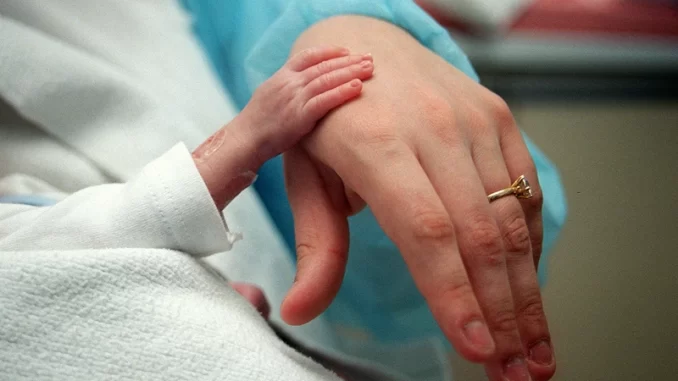

OAN’s Abril Elfi
3:21 PM – Sunday, November 26, 2023
A study has shown that since the overturning of Roe V. Wade, states that now ban abortions have seen an increase of 32,000 births.
Advertisement
The Institute of Labor Economics conducted a study that revealed that since the overturning of Roe V. Wade there has been a huge increase in birth rates.
“Our primary analysis indicates that in the first six months of 2023, births rose by an average of 2.3 percent in states enforcing total abortion bans compared to a control group of states where abortion rights remained protected, amounting to approximately 32,000 additional annual births resulting from abortion bans,” the study stated.
Based on preliminary birth data from the U.S. Centers for Disease Control and Prevention (CDC), the three researchers who conducted the study claimed that the change represented the “most profound transformation of the landscape of U.S. abortion access in 50 years.”
Alison Gemmil, an assistant professor at the Johns Hopkins Bloomberg School of Public Health stated that the new numbers indicated “an assault on reproductive autonomy.”
“We don’t always detect signals in these population aggregates because there’s a lot of variation when you group everybody together,” she said. “The fact that there is a signal at the population level means that something’s really going on. It’s pretty strong evidence, because fertility rates, or the number of births per woman of reproductive age, don’t typically change dramatically.”
However, one of the authors of the study argued that evidence suggests “diminished abortion access poses a risk to the health and financial stability of this vulnerable population.”
“In 2020, approximately 1 in 5 pregnancies ended in abortion,” the study said. “At the time they seek abortions, 75% of patients are low-income, 59% have previously given birth, and 55% report a recent disruptive life event such as falling behind on the rent or losing a job.”
Stay informed! Receive breaking news blasts directly to your inbox for free. Subscribe here. https://www.oann.com/alerts

Be the first to comment